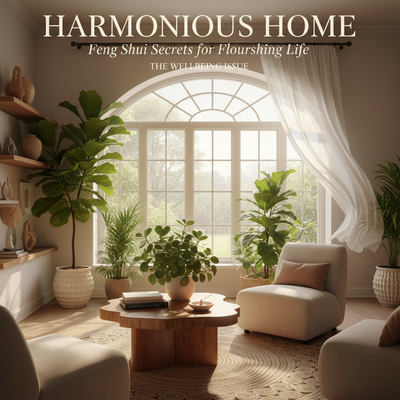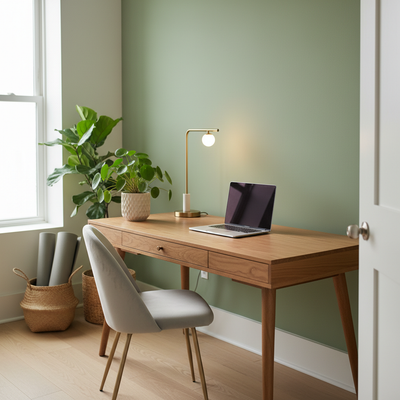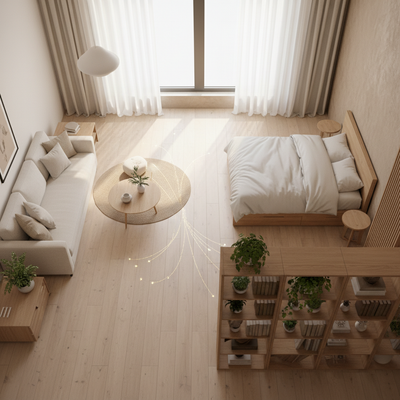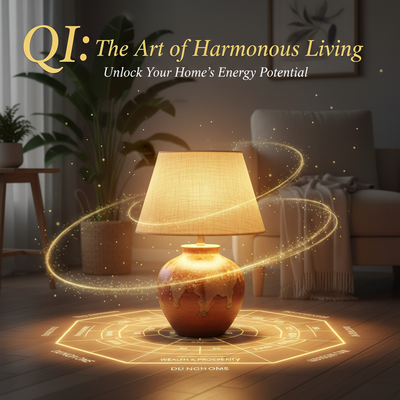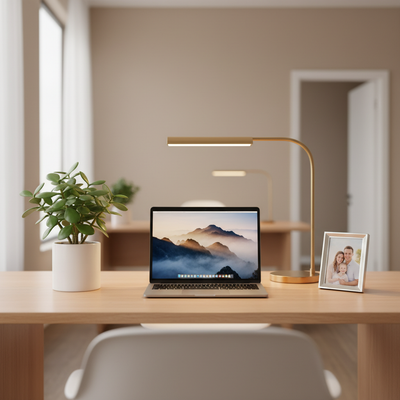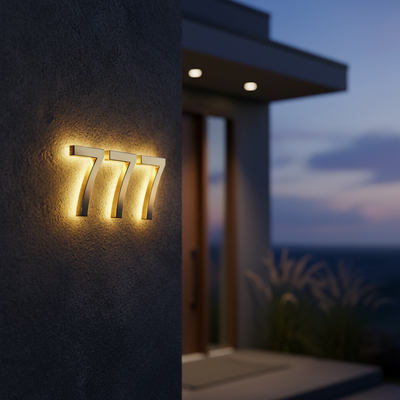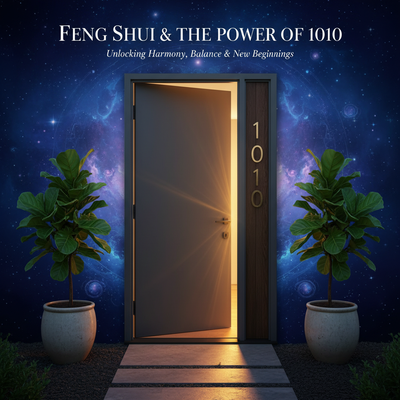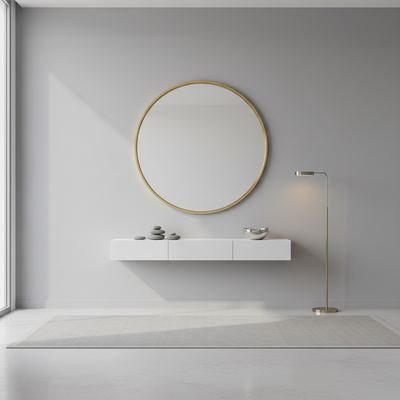Introduction: Areas and Colors

Your living space reflects who you are inside and serves as a powerful way to shape your life. The ancient practice of Feng Shui teaches that by thoughtfully arranging our homes, we can change the flow of life energy, called Qi (Chi), to support our goals for happiness, success, and well-being. A key part of this practice is using feng shui knowledge area colors.
These colors are not just for decoration. In Feng Shui, color is a living language, a specific type of energy that communicates with the universe and awakens the potential within each part of your home. Learning this language helps you intentionally create the life you want.
The Bagua Map: Energy Blueprint
The main tool for this work is the Bagua, an energy map that divides any space into nine different sections. Each of these sections, or "knowledge areas," connects to a specific part of life, such as wealth, relationships, or career. By finding these areas in your home, you can start to improve them.
Color as a Language
Color is one of the easiest and most effective ways to influence the Qi in a Bagua area. Each color connects to one of the Five Elements—the foundation of Feng Shui theory. When you add a specific color to a knowledge area, you are feeding it the elemental energy it needs to grow, which activates that part of your life.
The 9 Knowledge Areas
This section serves as your complete reference guide to the nine feng shui knowledge area colors and their matching colors. The table below provides a quick overview, followed by a detailed breakdown of each area to help you apply these ideas effectively.
Master Reference Table
| Knowledge Area (Gua) | Life Aspiration | Element | Primary Colors | Supporting Colors |
|---|---|---|---|---|
| Zhen | Family & New Beginnings | Wood | Green, Teal | Brown, Black, Blue |
| Xun | Wealth & Abundance | Wood | Purple, Green | Brown, Gold |
| Tai Qi (Center) | Health & Well-being | Earth | Yellow, Orange, Brown | Earth Tones |
| Qian | Helpful People & Travel | Metal | Gray, White | Metallics (Gold, Silver) |
| Dui | Children & Creativity | Metal | White, Pastels | Metallics (Gold, Silver) |
| Gen | Knowledge & Self-Cultivation | Earth | Dark Blue, Black, Green | Earth Tones |
| Li | Fame & Reputation | Fire | Red, Bright Orange | Green, Purple |
| Kan | Career & Life Path | Water | Black, Dark Blue | White, Gray, Metallics |
| Kun | Love & Relationships | Earth | Pink, Red, White | Yellow, Brown |
Area 1: Zhen (Growth)
- Aspiration: Family, Health, New Beginnings
- Element: Wood
- Colors: All shades of green and teal.
The Zhen area controls your connection to your family history, your current family relationships, and the energy for starting new projects. Add bright greens through healthy plants, artwork showing lush landscapes, or fabrics like pillows and throws. Brown, the color of tree trunks, also supports this Wood element area.
Area 2: Xun (Prosperity)
- Aspiration: Wealth, Abundance, Prosperity
- Element: Wood
- Colors: Purple, green, and gold.
This is your prosperity corner. Purple has long been connected with royalty and wealth, making it the main activator here. Green represents growth and life. To boost the energy, add touches of gold, which symbolizes the physical form of wealth. A purple amethyst crystal or a healthy green plant in a beautiful pot can be powerful additions.
Area 3: Tai Qi (The Center)
- Aspiration: Health, Well-being, Grounding
- Element: Earth
- Colors: Yellow, orange, and brown.
The Tai Qi, or center of your home, is the grounding point that affects all other areas. It is the heart of health and stability. Use warm, earthy colors like ochre, sandy beige, and rich brown to promote balance and well-being. A beautiful clay pot or a soft yellow rug can anchor the energy here.
Area 4: Qian (Support)
- Aspiration: Helpful People, Mentors, Travel
- Element: Metal
- Colors: Gray, white, and metallics.
The Qian area connects you to the energy of support—from friends, mentors, coworkers, or the universe itself. It also controls travel. Use crisp white and sophisticated grays to activate this Metal element area. Add metallic finishes like silver, gold, or chrome through picture frames, light fixtures, or decorative objects.
Area 5: Dui (Joy)
- Aspiration: Children, Creativity, Joy
- Element: Metal
- Colors: White, pastels, and metallics.
Dui is the area of pure joy, creativity, and the energy connected with children. White, which contains all colors of the spectrum, is the main color here, representing an open canvas for creation. Soft pastels also work beautifully. Use these colors in artwork, decor, or even creative supplies to keep the energy light and inspiring.
Area 6: Gen (Wisdom)
- Aspiration: Knowledge, Self-Cultivation, Spirituality
- Element: Earth
- Colors: Dark blue, black, and green.
The Gen area is your space for quiet thinking, learning, and spiritual growth. While its element is Earth, the colors connected with it are those of deep stillness and wisdom: dark blue and black. These colors encourage looking inward. You can also use earthy tones and greens. A comfortable armchair in a deep blue or a stack of books on a dark wood shelf would be perfect here.
Area 7: Li (Recognition)
- Aspiration: Fame, Reputation, Illumination
- Element: Fire
- Colors: Red, bright orange, and pink.
This area controls how you are seen in the world—your reputation and public recognition. It is powered by the strong Fire element. Use the color red carefully and intentionally here to ignite passion and visibility. A single red candle, a piece of art with fiery tones, or a red lampshade can provide the perfect spark without overwhelming the space.
Area 8: Kan (Flow)
- Aspiration: Career, Life Path, Purpose
- Element: Water
- Colors: Black and dark blue.
The Kan area represents your journey through life, your career, and your ultimate purpose. Its element is Water, which symbolizes flow and deep wisdom. The color black, which absorbs all other colors, represents the depth of potential and the unknown. Use black and deep blues to enhance this area, perhaps in a piece of furniture, a picture frame, or artwork that shows flowing water.
Area 9: Kun (Partnership)
- Aspiration: Love, Relationships, Marriage
- Element: Earth
- Colors: Pink, red, and white.
This is the essential relationship corner, controlling all partnerships, especially romantic ones. Pink is the main color, representing gentle love and compassion. Red can be added to introduce passion, while white brings in an element of joy and purity. Think in pairs: two pink candles, two rose quartz crystals, or artwork showing a happy couple.
Applying the Bagua Map
Knowing the colors is the first step; applying them correctly is the next. This simple process will help you map the Feng Shui knowledge areas onto your own home.
Step 1: Sketch Floor Plan
Start by drawing a simple, to-scale sketch of your home's floor plan. Include all rooms, doors, and major windows. You don't need an architectural drawing; a clear outline is enough. If you live in a multi-story home, you can apply the Bagua to each floor individually or just to the main floor where you spend the most time.
Step 2: Choose Your Method
There are two main methods for orienting the Bagua map:
- BTB/Western School: This is the simplest method. You align the bottom of the Bagua grid (the Kan, Gen, and Qian areas) with the wall containing the main entrance door to your home.
- Compass School: This traditional method uses a compass to find the true magnetic directions. You stand at the center of your home, determine which direction is North, and align the Kan (Career) area of the Bagua with the North sector of your home.
For beginners, the BTB method is highly effective and easy to use.
Step 3: Overlay the Grid
Once you've chosen your method, draw a nine-square grid (like a tic-tac-toe board) over your floor plan. Stretch the grid so it evenly covers the entire outline of your home. Each of the nine squares now represents one of the Feng Shui knowledge areas.
Step 4: Identify the Areas

With the grid overlaid, you can now clearly see which rooms or parts of rooms fall into each knowledge area. For example, your living room might occupy the Family and Wealth areas, while your kitchen might be in the Fame area. You can now use the color guide to start making intentional adjustments.
Beyond the List: The Five Elements
To truly master the use of Feng Shui colors, it's essential to understand the theory that powers them: the Five Elements, or Wu Xing. This system is the engine of Feng Shui, explaining why certain colors support or weaken an area. Moving beyond a simple list of colors to understanding these relationships will give you the confidence to make smart and flexible choices.
The Five Elements Engine
The Five Elements are Wood, Fire, Earth, Metal, and Water. Each element is connected with specific qualities, shapes, materials, and, most importantly, colors.
- Wood: Represents growth and vitality. Colors are green and brown.
- Fire: Represents passion and energy. Colors are red, bright orange, and pink.
- Earth: Represents stability and nourishment. Colors are yellow, beige, and sandy tones.
- Metal: Represents clarity and precision. Colors are white, gray, and metallics.
- Water: Represents flow and wisdom. Colors are black and dark blue.
These elements interact in natural cycles, which dictate how to enhance or balance the energy in a space.
The Productive Cycle
The Productive (Sheng) Cycle describes how one element nurtures and creates the next, creating a harmonious and supportive flow of energy. This is the cycle you use to strengthen a knowledge area.
- Water nourishes Wood (Water helps plants grow).
- Wood fuels Fire (Wood feeds a fire).
- Fire creates Earth (Fire produces ash).
- Earth produces Metal (Metal is mined from the Earth).
- Metal creates Water (Metal can be melted to a liquid, or attracts condensation).
This cycle explains why blue (Water) is a supporting color for the green (Wood) Family area, or why red (Fire) is supportive for the yellow (Earth) Health area.
The Destructive Cycle
The Destructive (Ke) Cycle describes how elements can weaken or control each other. This knowledge is crucial for understanding what colors to avoid in a particular area to prevent draining its energy.
- Wood depletes Earth (Tree roots break up the soil).
- Earth dams Water (Earth contains and blocks water).
- Water extinguishes Fire (Water puts out a fire).
- Fire melts Metal (Fire can melt metal).
- Metal cuts Wood (An axe chops wood).
This is why you should avoid large amounts of red (Fire) in the Metal (Helpful People) area, or a strong presence of metal decor in the Wood (Wealth) area.
Using This Knowledge
Armed with this understanding, you are no longer just following a color chart. You are now a practitioner. If your Fame area (Fire) feels weak, you know you can add red (its primary color) or green (the color of the Wood element that feeds Fire). This deeper knowledge allows for more nuanced and personalized applications of Feng Shui.
Common Mistakes and Fixes
As you begin your journey with Feng Shui colors, it's easy to make a few common mistakes. Recognizing these pitfalls can save you time and frustration, ensuring your efforts create harmony rather than imbalance.
Mistake 1: Overdoing It
The most frequent error is thinking "more is better." Painting the entire Fame corner fire-engine red or the whole Wealth area purple can create aggressive, overwhelming energy.
- Solution: Use color as an accent. A few strategically placed pillows, a single piece of art, a vase, or a throw blanket is often more powerful than a wall of color. The key is intention, not volume.
Mistake 2: Ignoring Cycles
Another common mistake is adding a color that clashes with the area's native element, based on the Destructive Cycle. For example, placing a large blue water fountain (Water element) in your Fame area (Fire element).
- Solution: Always consider the Five Element cycles. Before adding a color, ask: "Does this element support or weaken the area's native element?" Use the Productive Cycle to enhance and be mindful of the Destructive Cycle to avoid conflict.
Mistake 3: Forgetting Aesthetics
Your home must still be a place you love. Forcing a color you dislike into a room just because it's "correct" for Feng Shui will create negative personal energy that negates any potential benefit.
- Solution: Find shades and applications you love. If you dislike bright red for your Fame area, try a subtle terracotta, a soft pink, or use the color of the nourishing Wood element, green. Feng Shui should work in harmony with your personal taste.
Mistake 4: Only Using Paint
Many people think applying Feng Shui colors is limited to painting walls. This is a restrictive and often impractical approach.
- Solution: Think beyond paint. Colors can be introduced through textiles (rugs, curtains, pillows), artwork, decorative objects, furniture, lighting, and even fresh flowers. This layered approach is often more effective and easier to adjust.
Mistake 5: Neglecting Missing Areas
Sometimes, due to the shape of a home's floor plan, a Bagua area may be partially or completely "missing" (i.e., it falls outside the physical structure). Ignoring this can lead to persistent blocks in that life area.
- Solution: You can anchor the energy of a missing corner from inside the home. Place a mirror on the wall closest to the missing area to visually "expand" the space. You can also place the appropriate color or element (like a plant for a missing Wood area) near that wall to symbolically complete the Bagua.
From Theory to Practice
Applying these principles can lead to tangible shifts. A real-world example illustrates how strategic color use can unblock stagnant energy and invite new opportunities.
The Challenge: Stagnant Career
A client felt their career had completely stalled. Despite their efforts, they felt invisible at work and new opportunities were non-existent. They described a feeling of being "stuck in mud."
The Feng Shui Diagnosis
At THE QI FLOW, we recently worked with a client who felt their career had stagnated. Upon reviewing their floor plan, we found their Career (Kan) area, which is governed by the Water element, was located in their home office. The room was dominated by heavy, earthy yellow and brown tones. According to the Five Element theory, Earth dams and blocks Water, effectively stifling the flow of career energy.
The Solution: Strategic Infusion
Our solution was not to repaint the entire room black. Instead, we prescribed a strategic infusion of Water and its supporting Metal element. We recommended a beautiful, deep blue area rug to anchor the space. We had them introduce artwork featuring an image of a calm, flowing river. Finally, we added a sleek metal desk lamp and silver picture frames (Metal creates Water). This simple shift in color and symbolism helped clear the energetic block. A few months later, the client reported a renewed sense of purpose and a significant new opportunity at work.
Conclusion: Weaving Your Life
You now have a comprehensive guide to using feng shui knowledge area colors to create a more balanced and supportive home. Remember the key principles: the Bagua is your energy map, colors are powerful activators, and the Five Elements explain the fundamental relationships between them.
More than any chart or rule, the most powerful tool you have is your own intention. Start small. Choose one area of your life you'd like to enhance and introduce the corresponding color with a clear purpose in mind. Pay attention to how the space feels. The goal is to create an environment that not only looks beautiful but also feels resonant and uplifting. Enjoy the process of consciously weaving color, intention, and energy to design a life of harmony and fulfillment.
